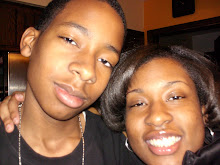Here we have two poems from the author, Anne Bradstreet. In these two poems, she uses a ton of imagery and diction. She gets her point across in both poems quite easily. It does not take much struggling and frying of the brain to really get the gist of what these poems are saying. In her first poem, she speaks of her husband, and of her love for her husband. In her second poem, she speaks of her life as a homeless mother. Further examinations of these two poems provide the following.
In her fist poem, “To My Dear and Loving Husband”, Anne Bradstreet expresses her deep love for her husband in a few ways. She uses a nice amount of imagery in her phrases. An example of this would be in the poem where she expresses how much she prizes her husbands love. She prizes his love “more than a whole mine of gold, or all the riches that the east doth hold.” This obviously shows that not only does she love her husband profusely; she loves her husbands love for her profusely. Another good example of her imagery is where she expresses how bountiful her love for her husband is. She expresses it as “love that rivers cannot quench.” The way that she words her phrases and the expressive words that she uses shows just how much she really loves her husband.
In her second poem, “The Author to her Book,” she once again uses a lot of imagery and diction, but this time it fills the whole poem. If this poem were allowed no imagery, there would be a blank page. Here she speaks about herself as being a homeless mother. She seems to be ashamed of her child, even somewhat embarrassed. She expresses that in lines seven through nine where she says while she is in public she blushes, meaning she is embarrassed, and she describes her child as being “unfit for light.” Although her child can be embarrassing to her, she shows that she still has love for her child, as she cleans her child up, washing his face. Her affection for him is expressed in line 11. As is brought out in line 6, when she is out in public, she is judged by all the other people in the public place. In the poem she appears to be without her husband, which is expressed in line 22. From the last line one can infer that she was not always in the position she is currently in. It appears that she most likely once had a house, even a husband, but somehow she lost it all and now she is a poor, homeless mother.
This poem highly contrasts from the first, in the sense of the first poem seeming to be in a very heartfelt, loving environment. Yet this one seems to take place in a dirty, dark embarrassing place, which no one would like to go to. The way Anne Bradstreet wrote this particular poem is in a way which you must read to the very end to understand what it is saying. The first poem in understandable right away, but one really can not appreciate it until one observes and meditates on the way she gets her point across. The way she uses imagery in the second poem is amazing. While reading it, one can no undoubtedly picture this poor, homeless woman, standing perhaps on a street corner, with her child, perhaps even begging for help and money. This second poem takes a bit more thought than the first, but its point still makes it across. The author obviously put a lot of thought into her work. She made it fun for the imagination; a work out for the mind.
Sunday, September 14, 2008
Subscribe to:
Post Comments (Atom)


1 comment:
you present several well thought ideas. I would choose one or two and develop those more fully. see comments 23, 18, 9, 30. 5/9
Post a Comment